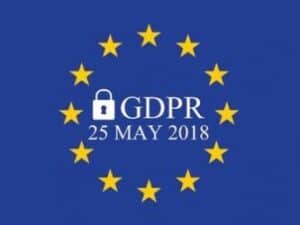In recent years, fundraising and cause marketing trends have been on the rise, particularly those utilizing strong social networks. Local and grassroots community engagement, each with unique features and legal considerations, are worth noting.
- National Localized Cause Marketing
According to the 2013 Cone Communications Social Impact Survey, Americans want companies to support issues that affect the quality of life locally (43%) more than nationally (close behind at 38%) or globally (20%). Companies are increasingly developing national cause marketing campaigns that allow their local retail stores to choose their own community-based nonprofit organization to support within a unified and nationally-branded campaign.
Structuring a multi-state, localized campaign requires significant planning and coordination to ensure success and compliance by all participants. Companies must ascertain that the charities selected by the local retail stores are appropriate to the brand. They must ensure that the partner organizations are in compliance with all applicable charitable fundraising regulations. In the past the charities needed to educate companies new to cause marketing that charitable fundraising regulations may be applicable to their campaigns (e.g., the company may need to be registered as a commercial co-venturer in certain states and comply with advertising disclosure requirements). The growing trend of developing charitable campaigns involving numerous local charities flips the roles; it is often the national companies which are familiar with knowledge of the applicable regulations while the smaller local charities are typically unaware of such requirements.
When a national company invites small, community-based nonprofits to participate in a cause marketing campaign, the company often has to introduce fundraising compliance concepts to the local charity partners (e.g., the need for the charity to be registered to solicit contributions in the state where the campaign will take place, which is typically the state where the charity is located). Many of these small charities aren’t aware they need to be registered to solicit funds or to benefit from a fundraising or cause marketing campaign. Newer charities may not understand the request for documentation confirming its state charitable fundraising registration status and provide IRS determination letters and Certificates of Incorporation instead. On a positive note, because of the unique opportunity to partner with a national company, bring in new supporters, and increase awareness about the work they are doing locally, the charity partners are usually willing to take the steps required for compliance.
Conducting a national localized cause marketing campaign can mean dealing with compliance issues with dozens, if not hundreds, of charity partners. Building a detailed compliance schedule and set of procedures, along with appropriate contract templates (which may require some customized state-specific compliance provisions where applicable), will help ensure a smooth roll-out of the campaign across retail stores nationwide.
- Grassroots, Community Interest Fundraising
There is a lot of energy that charitable organizations can harness from local, national, and virtual communities that share a common interest. Such niche groups can form strong bonds, whether around a popular form of exercise (think spin cycling or Zumba® classes) or online gaming. Plugging a charitable campaign into the shared activity can drive both awareness and funds to charitable causes in big ways. The use of social media to engage these shared interests communities may be one reason why these grassroots fundraising efforts are on the rise.
Grassroots, community interest fundraising often begins at an experimental level, with individuals who are part of the interest group presenting a new fundraising opportunity to a potential charity partner. When the campaigns are successful, they can be replicated regionally or nationally across multiple sites. This model is frequently structured to benefit a particular national charity.
Here are a few legal compliance issues to be considered when undertaking a scalable grassroots fundraising campaign:
- Who is legally responsible for conducting the fundraising activities? Charities must determine if they are a passive beneficiary of a voluntary fundraising effort or the legal owner of the fundraising campaign. National charities often do not want to take responsibility for a new fundraising idea developed outside of the organization (until the concept takes off!). If the concept proves successful enough to replicate nationwide, the charitable beneficiary may need to consider taking control and ownership of the campaign in order to ensure effective and efficient execution, including legal compliance.
- Who will own the intellectual property relating to the campaign? If the campaign is a coordinated fundraising effort to benefit one specific charity, the charity generally needs to maintain control over the campaign’s trademarks and other IP in order to maintain quality control and protect the organization’s reputation.
- Is any legal entity or individual being paid to provide advice and counsel on fundraising activities, or to directly solicit contributions? These campaigns often start out being organized by individuals within a local or virtual community on a voluntary basis, but as campaigns begin to grow and take on new levels of complexity, it often becomes practical to compensate someone to manage it. Fundraising efforts may happen at different levels simultaneously. For example, the solicitation of corporate sponsors and the recruitment and management of individual participants engaged in peer-to-peer fundraising in various regions of the country. If an individual or entity who is not an employee of the nonprofit is paid to advise or assist with these fundraising efforts, they may need to register as a fundraising counsel or professional fundraiser in the states where the charity and individual/entity are located, and potentially in other states where their fundraising efforts are targeted.
Engaging communities locally and harnessing grassroots social networks can be a powerful driver of awareness and source of funds for social good. Careful planning is required for compliance and success.
- Karen l. Wuhttps://perlmanandperlman.com/author/karenwu/
- Karen l. Wuhttps://perlmanandperlman.com/author/karenwu/
- Karen l. Wuhttps://perlmanandperlman.com/author/karenwu/
- Karen l. Wuhttps://perlmanandperlman.com/author/karenwu/















